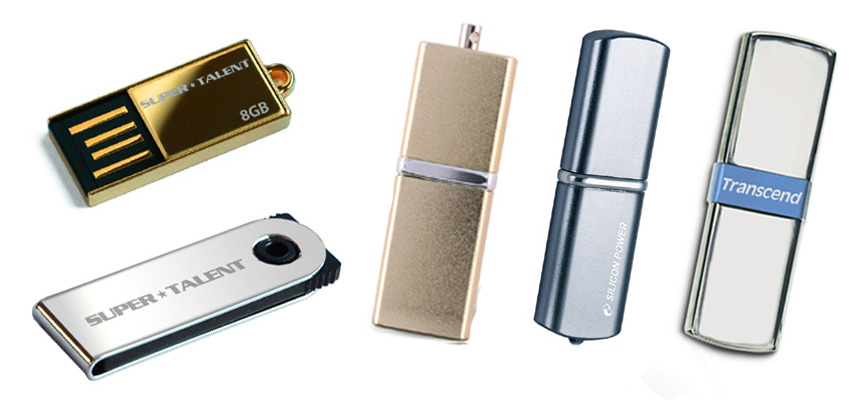Flash drives have gradually replaced floppy disks and slowly continue to displace optical disks. They take up little space and are capable of storing data for up to 10 years offline. Structurally, they are an electronic board with a transistor memory chip, where all the information comes in binary code, thereby obtaining a “physical” shell. A flash drive allows you to conveniently store files without fear of losing them suddenly. The only drawback here is the restriction on the recording and dubbing cycles, as well as the resource of the USB connector, which on average only lasts for 1,500 connections, after which it will need to be replaced. However, in terms of the totality of parameters, flash drives outperform other types of drives, largely due to their unpretentiousness.
Criterias of choice

When buying a flash drive, most users pay attention only to the amount of memory. However, there are many other parameters that you need to pay attention to when choosing a flash drive for everyday use.
Flash drive manufacturers
Despite the fact that the best flash drives are almost identical to each other in terms of design, the name of the manufacturer still remains an important criterion for selection. There are a huge number of companies that sell flash drives. Many of them are Chinese, but there are other manufacturers.. It is worth paying attention to the following large companies that have managed to positively establish themselves in the market:
- Samsung
- Kingston;
- Transcend
- Silicon Power;
- SanDisk
It is worth starting from these items when choosing.
Optimal flash drive size
The amount of memory for a flash drive depends on how you plan to use it. There is no need to buy a drive with a capacity of 64 or 128 GB for working with text documents that take up little space. It’s just an overpayment "for nothing." It is much more rational to focus on the following volumes:
- 1 GB - optimal for working with documents;
- 2-4 GB - suitable for downloading music;
- 4-8 GB - if you plan to download programs to share them or simply save on the media;
- 16-32 GB - will accommodate a couple of films;
- 64-128 - game flash drives that are recommended to be bought only if it is necessary to transfer large games;
- 256-512 GB or more are needed only for work, mainly by programmers or those associated with cinema. It will be easier for ordinary people to buy an external hard drive.
The amount of memory directly affects the cost of the flash drive: the more it is, the more expensive it will cost. Therefore, you need to choose based on the area of use, without reference to the price. Otherwise, you will soon have to buy another flash drive.
It should be borne in mind that manufacturers do not indicate the actual volume of the drive. In their opinion, one kilobyte consists of 1000 bytes, and not 1024, as it actually is. Because of this, a 16 GB flash drive will actually be able to store 14.9 GB. If you plan to store more data, you will have to buy another drive with a capacity of 32 GB or more.
Flash drive read and write speed
The usability of the flash drive depends on this parameter, but it has a serious dependence on the USB interface that is installed in the computer or laptop. Currently, the following standards exist:
- USB 2.0 The most common standard. The maximum speed is 480 Mb / s, but it also depends on the capabilities of the flash drive itself.On average, you should count on a reading speed of 25-40 MB, depending on the capacity of the flash drive with support for this standard.
- USB 3.0 An improved version with a seriously increased reading ceiling up to 5 Gb / s. There is backward compatibility with USB 2.0, but keep in mind that if you insert a USB flash drive with USB 3.0 support into the USB 2.0 port, then the maximum drive speed will be no higher than 480 Mb / s.
- USB 3.2. Supports speeds up to 20 Gb / s. It only works with a USB-Type-C connector, which is gradually replacing outdated USB. All modern mobile devices (tablets, laptops, smartphones) are switching to USB Type-C, which allows them to work at higher speeds. However, in the case of a PC you will need to buy an adapter.
In this regard, it makes no sense to buy a flash drive with USB 3.0, if USB 2.0 is installed on the computer or laptop. Speed will be reduced.
Additional flash drive features
Often, manufacturers preinstall various types of software on drives. As an example: programs for increasing compression of downloaded data, or creating a separate area protected by a password. Really useful software in such cases is almost never found, because on the network you can always find more functional counterparts, which can be free.
Some flash drives support biometrics and have a fingerprint scanner. If the data is very important, it can be protected in this way. For all such functions, you must pay, so you should think before buying.
Determined with the body of the flash drive
The cases of flash drives are of the following types:
- With a removable cap - the most popular type. The cap is easy to lose, but it provides external protection against dirt and dust, extending the life of the drive. As a material, rubber or plastic can be used.
- Open type - used on the smallest flash drives. There is no protection.
- Bracket - the design is a combination of the case and the bracket, which is fixed on the outside and is capable of closing the connector for a certain position.
- Slider - initially, the connector is hidden inside the case, going outside with a special key. The main disadvantage is the unreliability of the latch, which holds the flash drive in the open position. Also, when closed, there is still no contact protection.
In some cases, the case of a flash drive can be made metallic. This increases its resistance to high temperatures and allows you to work longer under high load, when compared with plastic counterparts. Rubber housings protect internal components from shock, softening them.
Reliability rating of flash drives for 2019
The best and most reliable drives that can last a long time without failure have been included in this top rating of USB flash drives.
SanDisk Extreme Pro USB 3.1
Great flash drive with a metal case. In fact, this is an SSD, with a data reading speed of 400 Mb / s. Available with 128 or 256 GB of memory. Memory type - MLC, with proper care, the flash drive can last a very long time.

Samsung Bar Plus
Powerful drive. The body is made of metal. The amount of memory varies from 32 to 256 GB with a read speed of 300 MB / s. The advantages include a waterproof case and small size.

Kingston Data Traveler 2000
A flash drive with support for cryptographic encryption. To open access to files you need a PIN code, the keys themselves are stored in the memory that is powered by the battery. Co-developed by Kingston and iStorage. A flash drive has a high cost, has two options: 16 and 32 GB with a reading speed of 133 Mb / s The flash drive has an IP57 certificate and is able to survive a short immersion in water without failure. Considering 32GB flash drives, it is best to take this option if data privacy is of great importance.

The fastest flash drives
Kingston hyperx savage
A flash drive with an aggressive gaming design. This is expressed in the capital letter X. This is also the main drawback of the drive - it is difficult to use it with other flash drives in neighboring connectors. But it provides impressive parameters in terms of data reading speed of 350 Mb / s.The amount of memory varies from 64 to 512 GB. The device does not heat up during prolonged use.

Kingston Ironkey s1000 Enterprise
This drive has its own encryption system (Iron Key). This allows you to save personal data. The software is bundled and installed separately. The standard design is a metal case with a cap. The market offers options from 4 to 128 GB of memory. The read speed is always the same and is 400 Mb / s. The disadvantage can be considered quite a high cost, since the drive is focused on corporate clients.

Corsair Flash Voyager Gs (CMFVYGS3)
A flash drive in a metal case with a minimum of "beauties". She is not very pretty, but reliable and has a good data transfer rate. Available in three versions: 64, 128 and 256 GB. The write speed grows with the amount of memory. At 64 GB, it fluctuates around 70 Mb / s, and at 256 GB it rises to 105 Mb / s. Reading speed is always stable - 260 Mb / s.

The best USB flash drives with interface 2.0
Sandisk cruzer fit
A miniature flash drive (protrudes only 5 mm from the connector), which is great for car radios or laptops. The memory capacity of up to 64 GB allows you to put a lot of music or movies on it. Included with the purchase is given access to SanDisk Secure Access - software for creating and encrypting a personal folder on the drive. Read speed is 28 Mb / s.

Transcend JetFlash 600
It has a read speed of 32 Mb / s. Otherwise, this flash drive has no special advantages. The case is plastic, with a cap that does not attach to the case. The widest selection of versions - from 4 to 128 GB.

Best usb flash drives of high capacity
Kingston datatraveler ultimate gt
The absolute market leader. The standard capacity is 1 TB, the maximum is 2 TB. The flash drive is the most voluminous and looks like a metal rectangle. A read speed of 300 Mb / s also makes it one of the leaders. However, the cost of the drive is serious and equals a good gaming laptop. Among the shortcomings can be highlighted the lack of protection against moisture and dust.

PNY PRO Elite USB 3.0 512GB
It has very good characteristics. Read speed is 400 Mb / s, and peak writing can reach 250 Mb / s. Another reason to pay attention to this drive is a long warranty of 60 months. Such terms are not provided by any other manufacturer.




